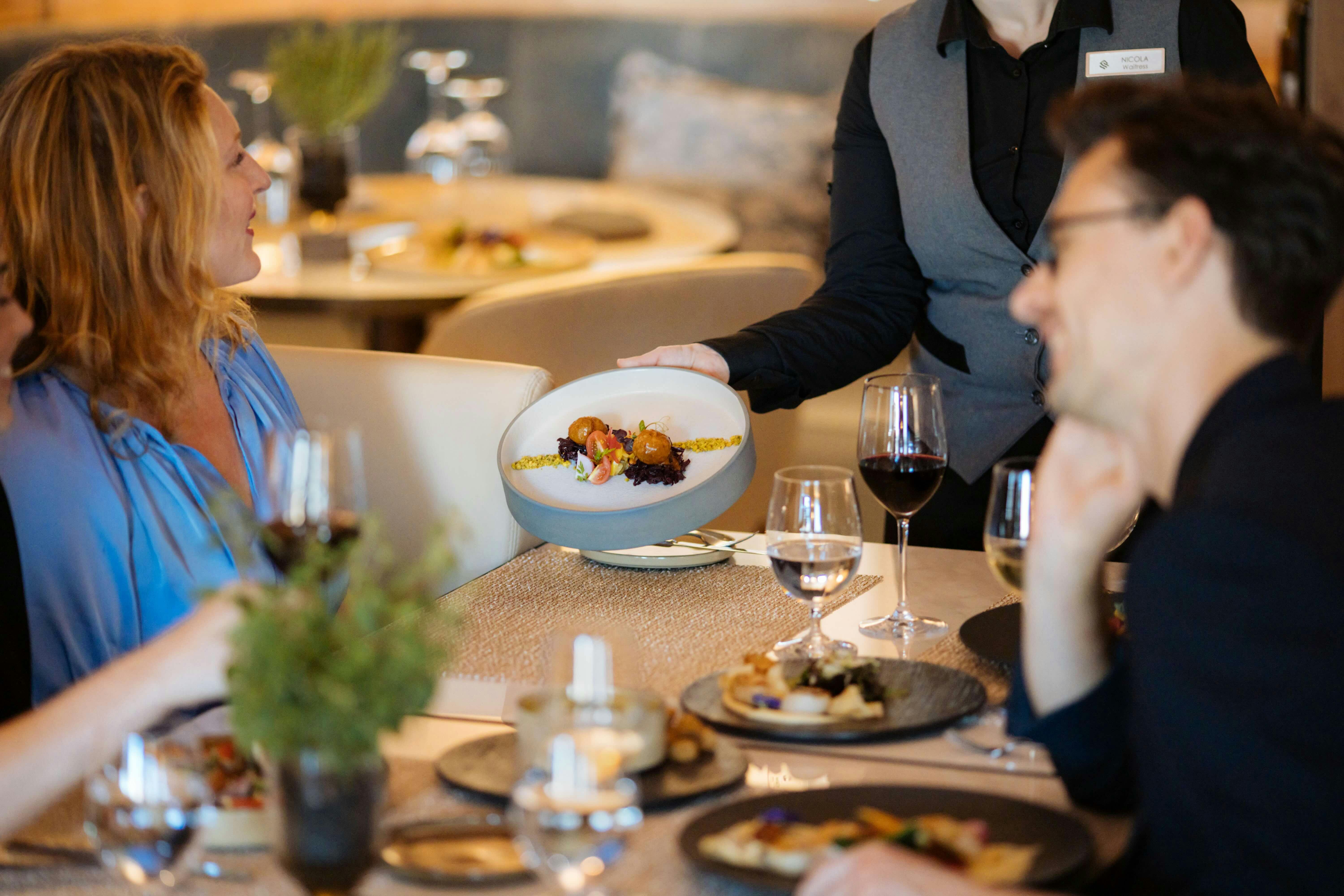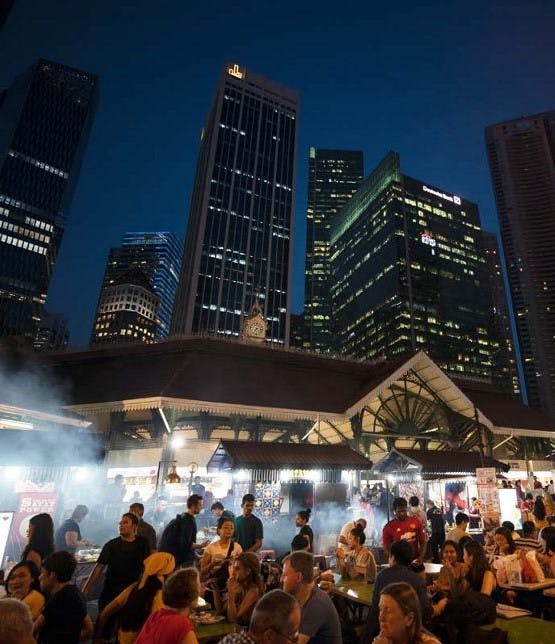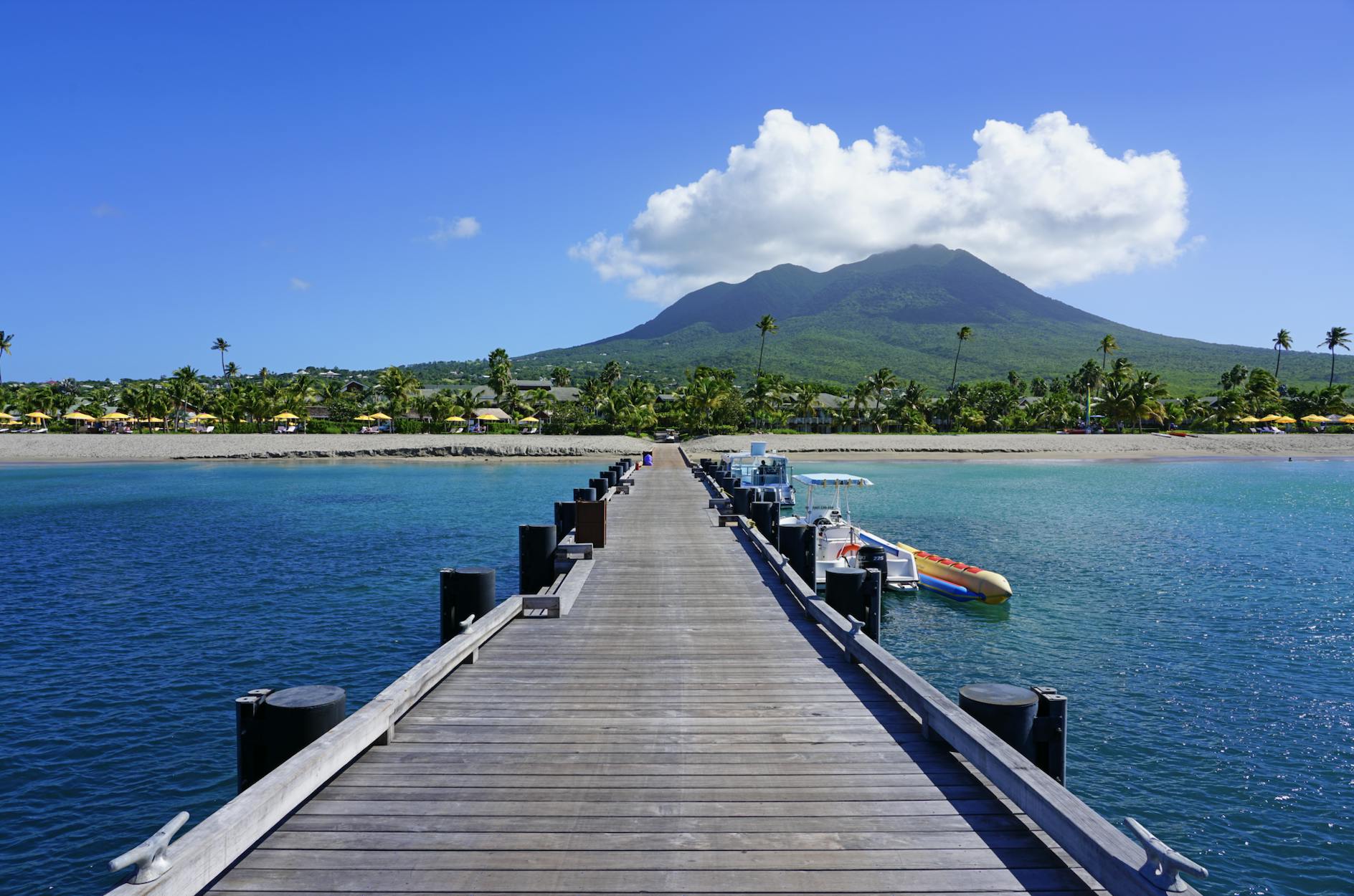A Feast For the Mind with S.A.L.T. on the High Seas
“USE ALL OF YOUR BUTTER,” says the Silversea chef-instructor Carolina Gomes as her students prepare Moules à la crème Normande in the test kitchen of the Silver Moon. The regional French recipe calls for bacon, butter and crème fraîche, along with Calvados and cider, and the handful of home cooks who have signed up for this class are here to better understand how all this richness relates to Norman traditions.
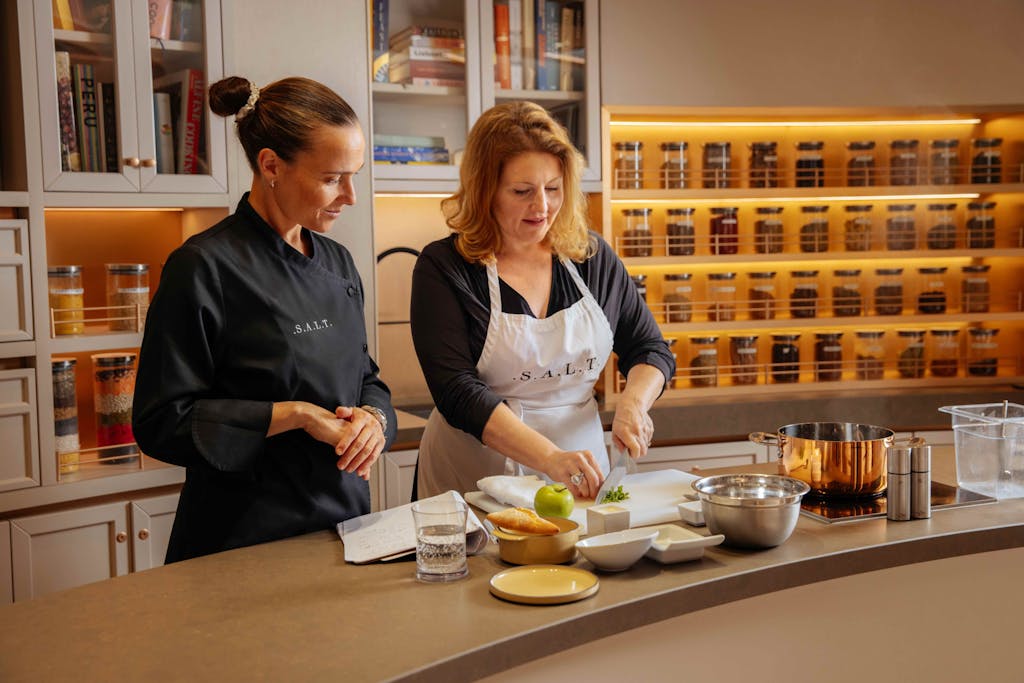
It is the first morning of a two-week voyage south along the coasts of France, Spain and Portugal when the ship, carrying 600 passengers and an equal number of crew, sails into the small, historic port of Honfleur in the early hours. Before disembarking, I tie on an apron for “Countryside to Coast: Normandy’s Culinary Riches,” in the S.A.L.T. Lab.
S.A.L.T. LAB: Storytelling With A Heads-On Twist

A lawyer-turned-chef from Lisbon, Ms. Gomes gives an introduction to Honfleur as my classmates and I wrap apples in pastry dough for Bourdelots to complement the mussels.
She describes the luscious landscapes that attracted the great Impressionists, the hundreds of apple varieties and the abundance of fresh fish. She says her favorite part of her job is the research, discovering details that create connections with local flavors and make a destination come alive.
Indeed, all of that context comes together in the harbor, where the Seine and English Channel meet, and fishmongers arrange sole and wild sea bass on ice-laden tables along the waterfront. Up and down the cobblestone streets, vendors sell Normandy’s prized apples, soft cheeses, sausages and cider from stalls, while day trippers from Paris linger at the outdoor cafes with chalkboard menus publicizing moules.

The town, with its half-timbered houses, has adopted a chalky blue as its signature color, and the shade appears like a leitmotif on shutters and beams, as well as pastel studies of the sky at the municipal museum. Ms. Gomes’s teachings are reinforced by the paintings there depicting scenes from traditional Norman life: apple pickers napping in an orchard; cows in repose; lively 19th-century women sorting turbot into baskets or emerging barefoot from the surf with a haul of tiny crevettes.
Deeply inspired by the port’s artistic and pastoral spirit, I return to the ship to tables full of fresh flowers. Then I change and float on my back in the saltwater pool, marveling at Honfleur’s pale blue sky. I’d hoped to relax and become a better cook onboard but had no idea a cruise could feel so stimulating and soulful.
S.A.L.T. KITCHEN & BAR: A Different Experience Every Night

That evening, the Norman experience continues at the onboard restaurant, S.A.L.T. Kitchen, with specialties like cider-poached scallops and mussels accompanied by crusty bread and a sauce fragranced with Calvados, shallots, parsley and cream. It takes many weeks to develop a menu, and here the nightly offerings change with the ports. Oleksii Lapaii, the restaurant’s chef de cuisine, says the biggest victory is when guests tell him they ate a dish on land that was also served in the S.A.L.T. Kitchen, and declare, “Yours was better.”
“It’s not just about food, it’s about contextualization,” says Ilaria Edoardi, a food anthropologist and S.A.L.T.’s executive director. “When you have a connection to the culture, it creates mutual respect. It’s a more ethical way of experiencing a place.”
Raised in her mother’s Northern Italy trattoria, which fed passengers and workers from the nearby train station, Ms. Edoardi is a softhearted and hardworking leader who lights up when she spots organ meats on menus. “I’m sorry, but filet is boring,” she says, laughing. The national dish of Malta, rabbit stew, will never be the most-ordered meal onboard, but S.A.L.T. Kitchen presents a faithful rendition, she says, because “it’s not respectful to change it to chicken.”
Ms. Edoardi describes cookbooks as dictionaries of cuisine and explains that often the finishing touches regionalize a dish. She grew up eating a minimalist take on mussels in Vicenza, near Venice, and will allow a touch of white wine and black pepper. If that. Whereas Mr. Lapaii, who is from Odessa, in Ukraine, recalls steaming mussels garnished with raw garlic and fresh dill over an open fire on the Black Sea. She encourages the S.A.L.T. staff to share their cherished food memories with guests and each other, and delights in seeing photos of Mr. Lapaii teaching his daughter how to make syrniki — Ukrainian cheese pancakes served with jam and sour cream.
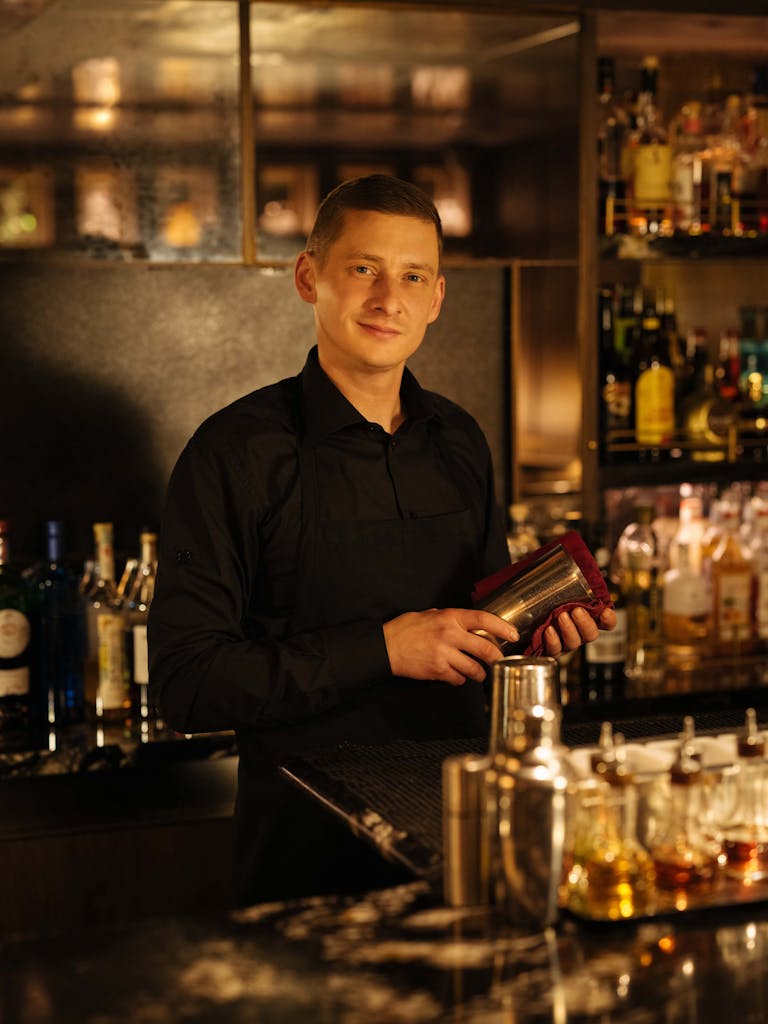
Eventually guests make their way to the S.A.L.T. Bar, a dark and moody jewel box lined with a collection of colorful glass decanters and velvet banquettes. Here the mixologist Dawid Mroz crafts custom cocktails derived from the ingredients and history of the region with efficiency and finesse. “The menu’s always changing because we’re always traveling,” he says. Also a trained chef, Mr. Mroz prepares vegan apple honey with fresh lemon and chamomile tea for one drink and captivates guests with a concoction crowned with an orb that, poof, vaporizes into citrus smoke.
S.A.L.T. EXPERIENCES: One-of-a-Kind Gastronomical Adventures

For two days, the Silver Moon docks in the center of Bordeaux, a city that’s been rolling in riches since 1152, when its wines were served at the wedding of the future King Henry II of England and the Duchess of Aquitaine. Nine guests have signed up for a bespoke all-day affair that includes a private cooking class, potager tour and lunch at a five-star resort in the French countryside, followed by a tasting at Château Haut-Bailly.
It’s not every day that a celebrated chef teaches you how to make one of his most iconic dishes. But Nicolas Masse, who says, “I got my two Michelin stars on this plate,” has cleared his entire morning to do just that. The Angry Egg, comprised of a perfectly poached egg set in a wild nest of fried phyllo atop a vivid spinach sauce, is a complicated, three-chef undertaking at the restaurant he oversees at Les Sources de Caudalie. Yet he is all patience as he comes around to show students one by one how to rap the egg on the counter to create hairline fissures all over. “It is very delicate,” he warns.
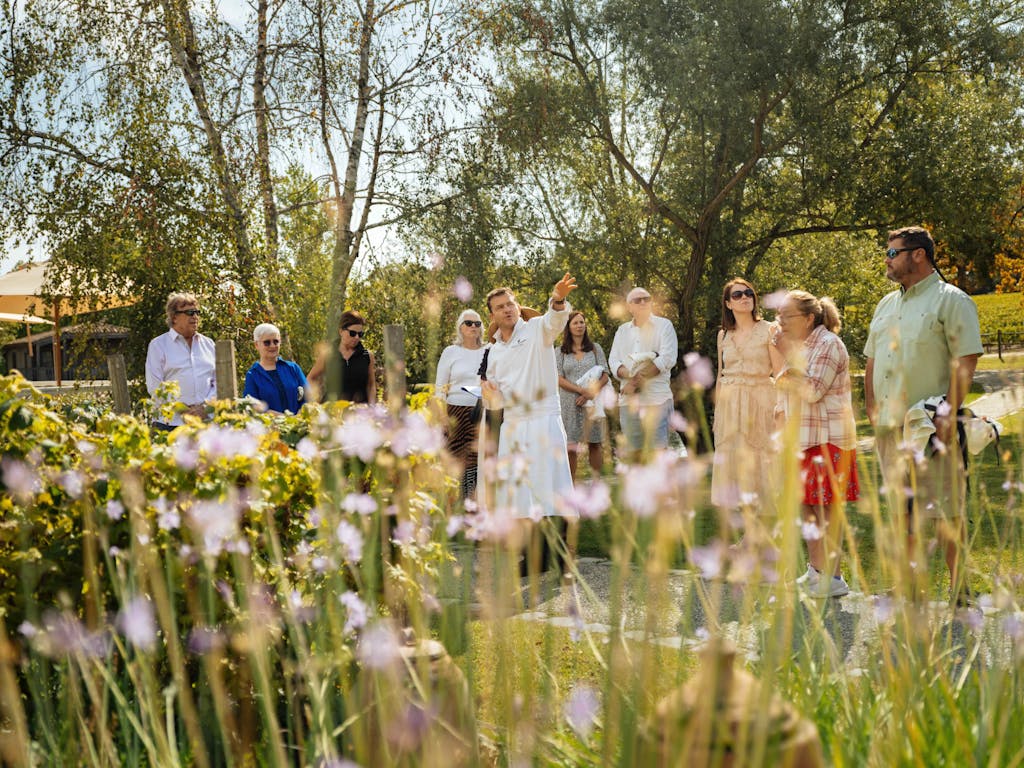
Mr. Masse also has techniques for preserving the color of the pureed vegetables (he shocks them in ice baths and adds ice to the blender), the shape of the eggs (he floats them in water), and holding everything in place on the plate (he uses an invisible dab of mashed potatoes as glue). The secret to his sauce, however, is the one we gleaned from Ms. Gomes back in Honfleur. “I am from Normandy,” he says, heaping butter into the pan, “so I add a little more.”
By now, I’ve dined on Mr. Lapaii’s duck salad, pork and apple meatballs and turbot with sorrel, and had occasion to congratulate him for besting the bistros on land several times. And Ms. Gomes has given me the ultimate souvenirs, by teaching me how to make sweet and savory crepes, salted caramel and steak bordelaise back home.
Toward the end of the cruise, Ms. Gomes tells me that she likes to visit grocery stores at ports to see what the locals are eating. I’ve been perusing shelves of sea beans and butter biscuits in my free time, doing the exact same thing. For ultimately, what unites the S.A.L.T. staff and the guests who gravitate to this program are passion, curiosity and a desire to connect with the worlds of others.
“It’s a way to show and share our humanity,” Ms. Edoardi says.
A Feast For The Mind On The High Seas was created in collaboration with T Brand, the content studio of New York Times Advertising



